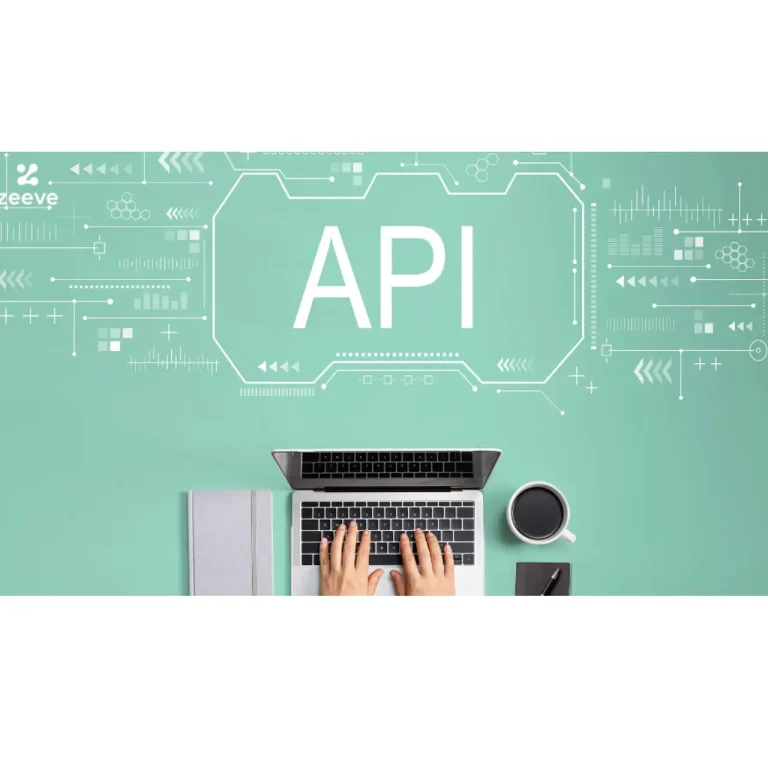Master APIs with ease! This comprehensive guide explores Postman, a powerful tool for interacting with APIs. Learn how to send requests, manage responses, and unlock the full potential of using Postman APIs.
Unleashing the Power of APIs with Postman
In today’s interconnected world, APIs (Application Programming Interfaces) play a crucial role in seamlessly exchanging data between applications. Whether you’re a seasoned developer or just starting your API exploration, Postman emerges as an invaluable companion. This comprehensive guide empowers you to leverage Postman’s capabilities, transforming you into an API maestro!
What is Postman?
Postman is a versatile API client, a software application that acts as a middleman between you and the APIs you interact with. It simplifies the process of sending requests to APIs, analyzing responses, and managing various aspects of the API development lifecycle.
Why Use Postman?
Here’s a glimpse into the treasure trove of benefits Postman offers:
- Effortless API Testing: Postman streamlines the process of testing APIs. You can craft different types of requests (GET, POST, PUT, etc.), define parameters, and examine the server’s response. This empowers you to identify and rectify issues before integrating the API into your application.
- Enhanced Development Workflow: Postman acts as a centralized hub for managing your API interactions. Organize requests into collections, group related APIs, and streamline your development process.
- Seamless Collaboration: Postman fosters teamwork by enabling you to share collections and environments with your collaborators. This ensures everyone is on the same page, promoting efficient API development.
- Intuitive User Interface: Postman boasts a user-friendly interface that caters to both beginners and experienced developers. The clean layout and intuitive features make it easy to navigate and comprehend.
- Robust Functionality: Postman goes beyond basic request-response functionalities. It allows you to set up environments with different variables, manage authentication methods, and even write automated tests for your APIs.
Getting Started with Postman
There are two primary ways to leverage Postman’s prowess:
- Postman Desktop App: Download and install the Postman desktop application for your operating system. This provides a robust, offline environment for managing your APIs.
- Postman Web App: Access Postman directly through your web browser at. This option offers greater accessibility but may have limitations compared to the desktop app.
Once you’ve chosen your preferred method, it’s time to delve into the exciting world of APIs with Postman!
Building Your First Request
Let’s embark on a practical adventure by crafting your first request using Postman. Here’s a step-by-step guide:
- Fire Up Postman: Launch the Postman application (desktop or web app).
- Craft Your Request: In the central workspace, enter the API endpoint URL in the text field. This URL specifies the exact location of the API you want to interact with.
- Choose Your Weapon (HTTP Method): Select the appropriate HTTP method from the dropdown menu next to the URL. Common methods include GET (to retrieve data), POST (to create data), PUT (to update data), and DELETE (to remove data). Refer to the API documentation for the specific method required for your desired action.
- Unleash the Parameters (Optional): Depending on the API, you might need to provide additional information through parameters. These can be sent in two ways:
- Query Parameters: Appended to the URL as key-value pairs (e.g., “?name=John&age=30”).
- Body Parameters: Included in the request body, typically in formats like JSON or form-data. Explore the API documentation to understand the expected format and parameters.
- Send the Request: Click the “Send” button to dispatch your meticulously crafted request to the API server.
Understanding the Language of APIs: Postman Status Codes
Postman, as a faithful companion in your API adventures, not only facilitates sending requests and examining responses but also acts as an interpreter, deciphering the server’s response codes. These status codes convey crucial information about the outcome of your request, guiding you towards successful interactions and troubleshooting potential issues.
Here’s a breakdown of the common status code categories you’ll encounter in Postman:
1. 2xx Success Codes:
These codes indicate that your request was received, understood, and processed successfully by the server.
- 200 OK: The most sought-after code! It signifies that the request was fulfilled, and the response contains the requested data.
- 201 Created: This code pops up when a POST request successfully creates a new resource on the server.
- 204 No Content: While the request was successful, the server has no data to return in the response. This might occur after a DELETE request that removes a resource.
2. 3xx Redirection Codes:
These codes suggest that the requested resource might reside at a different location. The server prompts your client (Postman in this case) to take an additional action to complete the request.
- 301 Moved Permanently: The requested resource has permanently relocated to a new URL. The response typically includes the new location in the “Location” header.
- 302 Found: Similar to 301, but the redirection is temporary. This code is often used when resources are temporarily unavailable on their usual location.
- 304 Not Modified: This code indicates that the requested resource has not been modified since the client last accessed it. This is helpful for caching mechanisms to optimize performance.
3. 4xx Client Error Codes:
These codes point the finger at your request, indicating an error on your end that prevents the server from fulfilling it.
- 400 Bad Request: The most common culprit! This code suggests that the request itself is malformed or contains invalid syntax. It could be due to missing parameters, incorrect data format, or a violation of API rules.
- 401 Unauthorized: You lack the necessary credentials to access the requested resource. This might occur due to missing authentication information or invalid credentials.
- 403 Forbidden: Even with proper credentials, you might not have the required permissions to access the specific resource. This often signifies restricted access based on user roles or permissions.
- 404 Not Found: The server couldn’t locate the resource you requested. This could be due to a typo in the URL, a non-existent resource, or an issue on the server-side.
- 405 Method Not Allowed: The HTTP method you used in your request (e.g., GET, POST) is not supported for the requested resource. Refer to the API documentation for valid methods.
4. 5xx Server Error Codes:
These codes signify that the server encountered an issue on its end, preventing it from fulfilling your request.
- 500 Internal Server Error: A generic error code indicating an unexpected problem on the server side. This could be due to server overload, software bugs, or configuration issues.
- 502 Bad Gateway: This code arises when a server acting as a gateway or proxy receives an invalid response from an upstream server. It suggests an issue within the server infrastructure.
- 503 Service Unavailable: The server is temporarily overloaded or undergoing maintenance and cannot handle your request at this moment.
Mastering the Art of Collections
Postman’s collections feature empowers you to organize your API interactions effectively. Imagine a well-stocked toolbox, where each collection represents a specific project or API you’re working with. Here’s how to leverage collections:
- Creating a Collection: Click on the “Collections” tab in the sidebar. Then, hit the “+” button and select “Create Collection.” Give your collection a descriptive name that reflects its purpose.
- Adding Requests: Craft individual requests as explained earlier. Once a request is built, right-click on it and choose “Add to Collection.” Select the appropriate collection from the list.
- Organizing Your Toolbox: Collections can be nested within folders for a more structured approach. This is particularly beneficial for managing complex APIs with numerous endpoints.
Environments: Tailoring Requests for Different Scenarios
Environments in Postman enable you to manage variables and configurations specific to different API deployment environments (e.g., development, staging, production). This prevents the need to modify URLs or parameters repeatedly for each environment.
- Creating an Environment: Navigate to the “Environments” tab in the sidebar. Click the “+” button and select “Create Environment.” Assign a meaningful name to your environment.
- Defining Variables: Click on the “Variables” tab within the environment window. Here, you can create key-value pairs representing variables used in your API requests. For instance, you might have a variable named “baseURL” that stores the base URL of the API for a specific environment.
- Utilizing Variables: Within your requests, leverage these variables using double curly braces (
{{variable_name}}). Postman automatically replaces these placeholders with the corresponding values defined in the environment. This streamlines the process of adapting requests to different environments.
Authentication: Securing Your API Interactions
Many APIs necessitate authentication to ensure only authorized users can access specific resources. Postman supports various authentication mechanisms to cater to these security requirements:
- Basic Auth: Encode username and password credentials directly within the request headers for basic authentication scenarios.
- API Keys: Include API keys provided by the API provider in the request headers for authorization.
- OAuth: For more complex OAuth authentication flows, Postman offers a dedicated authorization tab to configure the process.
- Bearer Tokens: For token-based authentication, enter the bearer token in the Authorization header, typically prefixed with “Bearer “.
Refer to the API documentation for the specific authentication method required by the API you’re interacting with.
Advanced Functionality: Supercharging Your Workflow
Postman extends beyond fundamental request-response interactions. Here are some advanced features to elevate your API mastery:
- Pre-request Scripts: Execute JavaScript code before sending a request. This allows for dynamic manipulation of request parameters or headers based on specific conditions.
- Tests: Craft automated tests (using JavaScript) to verify the API’s behavior and ensure responses meet your expectations.
- Monitors: Set up monitors to periodically send requests and track API performance over time. This is crucial for monitoring API health and identifying potential issues proactively.
These advanced features empower you to automate tasks, streamline testing processes, and gain deeper insights into API behavior.
Beyond the Basics: Resources for Further Exploration
The vast world of APIs offers a plethora of resources to enhance your learning journey:
- Postman Learning Center: Postman provides a comprehensive learning center with tutorials, documentation, and code samples to delve deeper into various functionalities.
- API Reference Websites: Numerous websites like https://dev.search.io/docs/api/ and https://rapidapi.com/ catalog APIs from various providers, allowing you to explore and experiment with diverse functionalities.
- Online Communities: Engage with fellow API enthusiasts and developers in online communities like Postman’s forum or Stack Overflow to seek help, share knowledge, and stay updated on the latest trends in the API landscape.
By actively utilizing these resources, you’ll continuously expand your API expertise and unlock the full potential of Postman.
Conclusion: Mastering the API Universe with Postman
Postman equips you with the necessary tools and functionalities to conquer the exciting realm of APIs. From crafting basic requests to leveraging advanced features like environments, authentication, and scripting, Postman empowers you to streamline development workflows, ensure robust API interactions, and gain valuable insights into API behavior.
Embrace the power of Postman, embark on your API exploration journey, and unleash the potential of connected applications in your projects!

